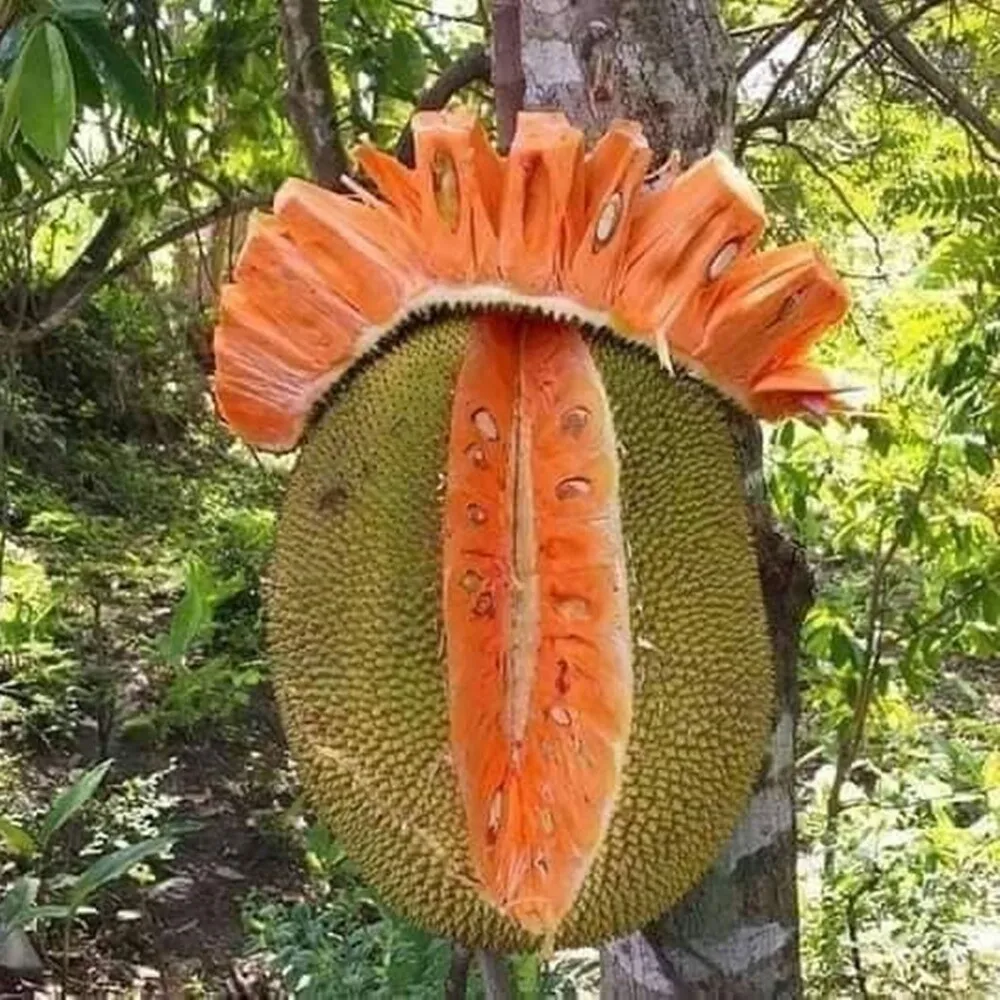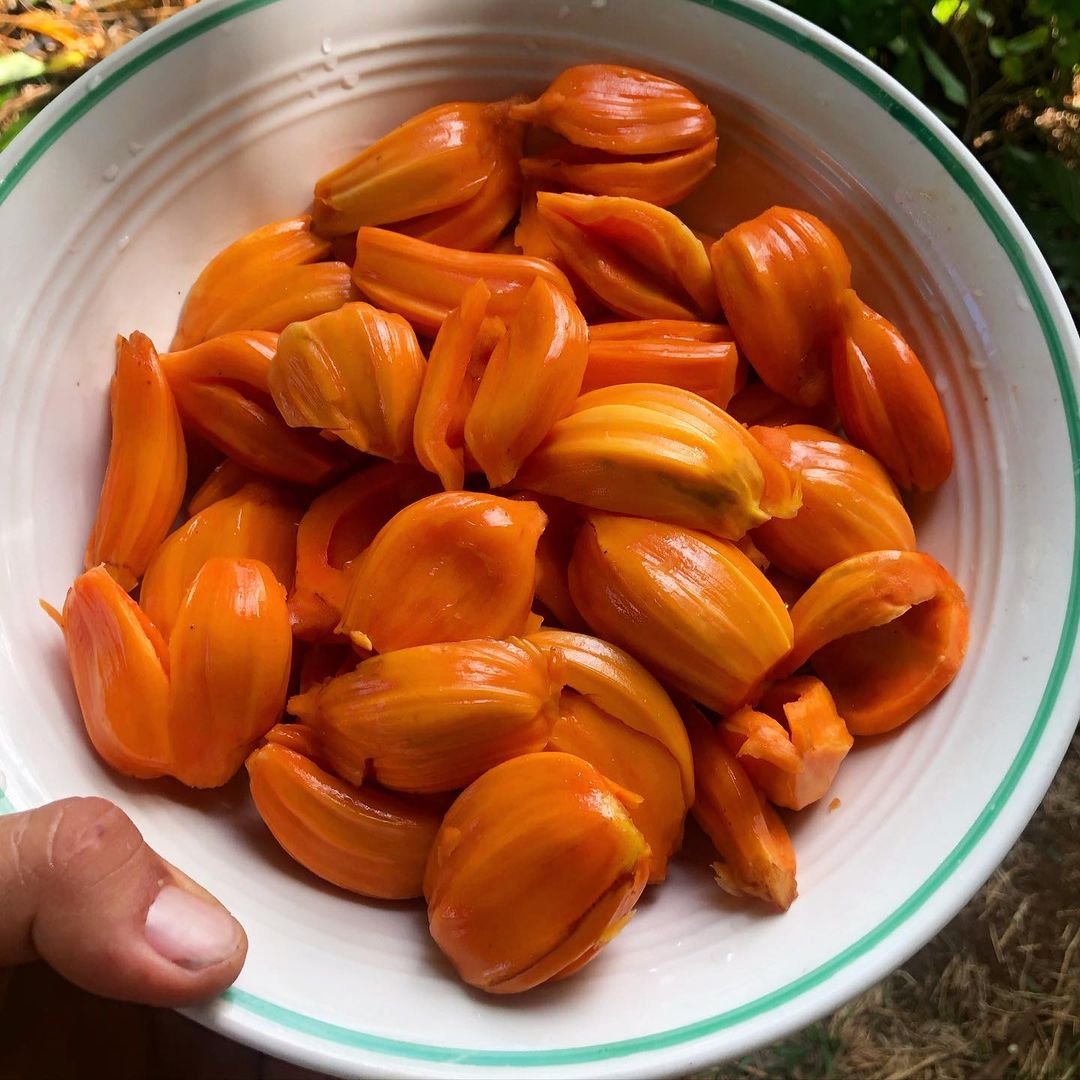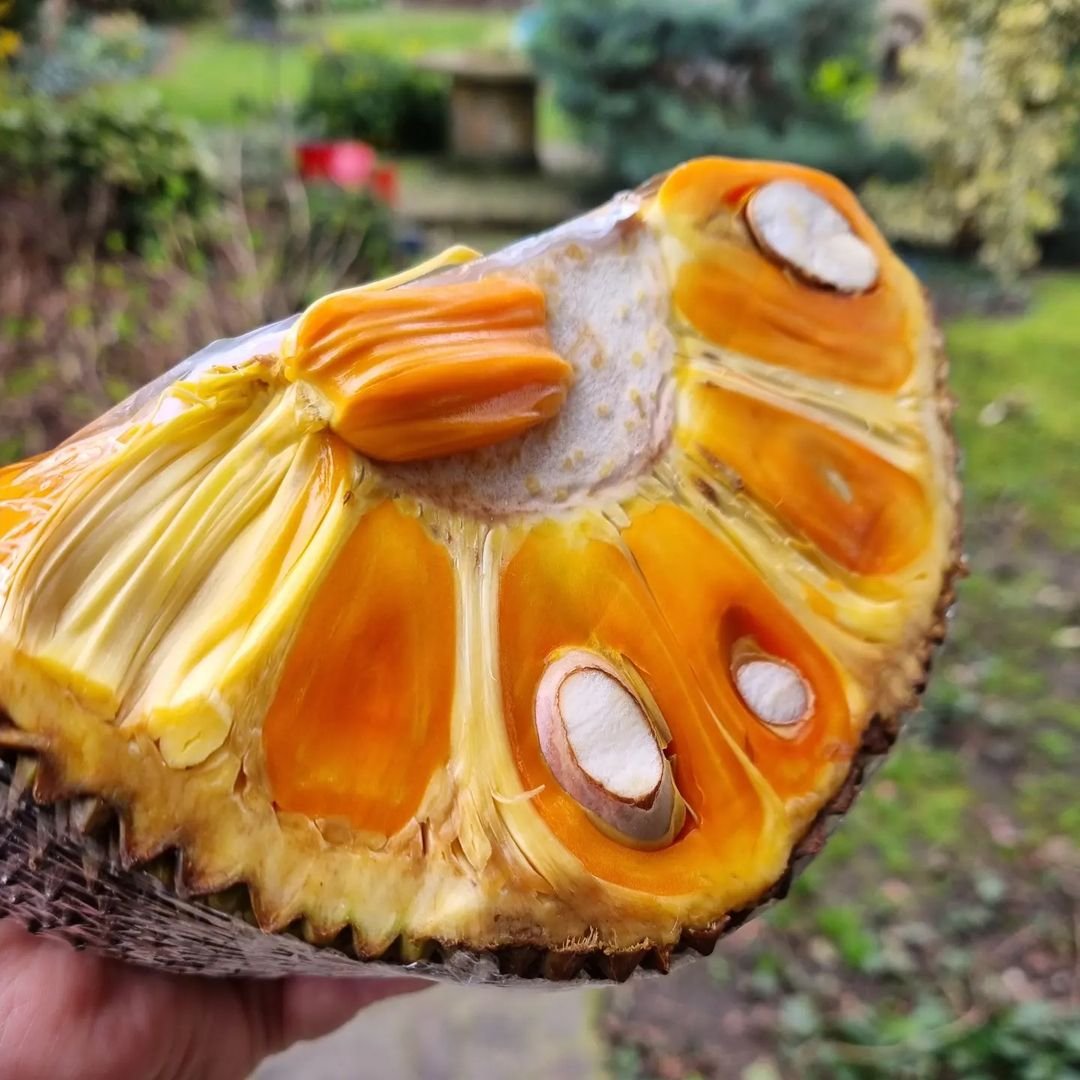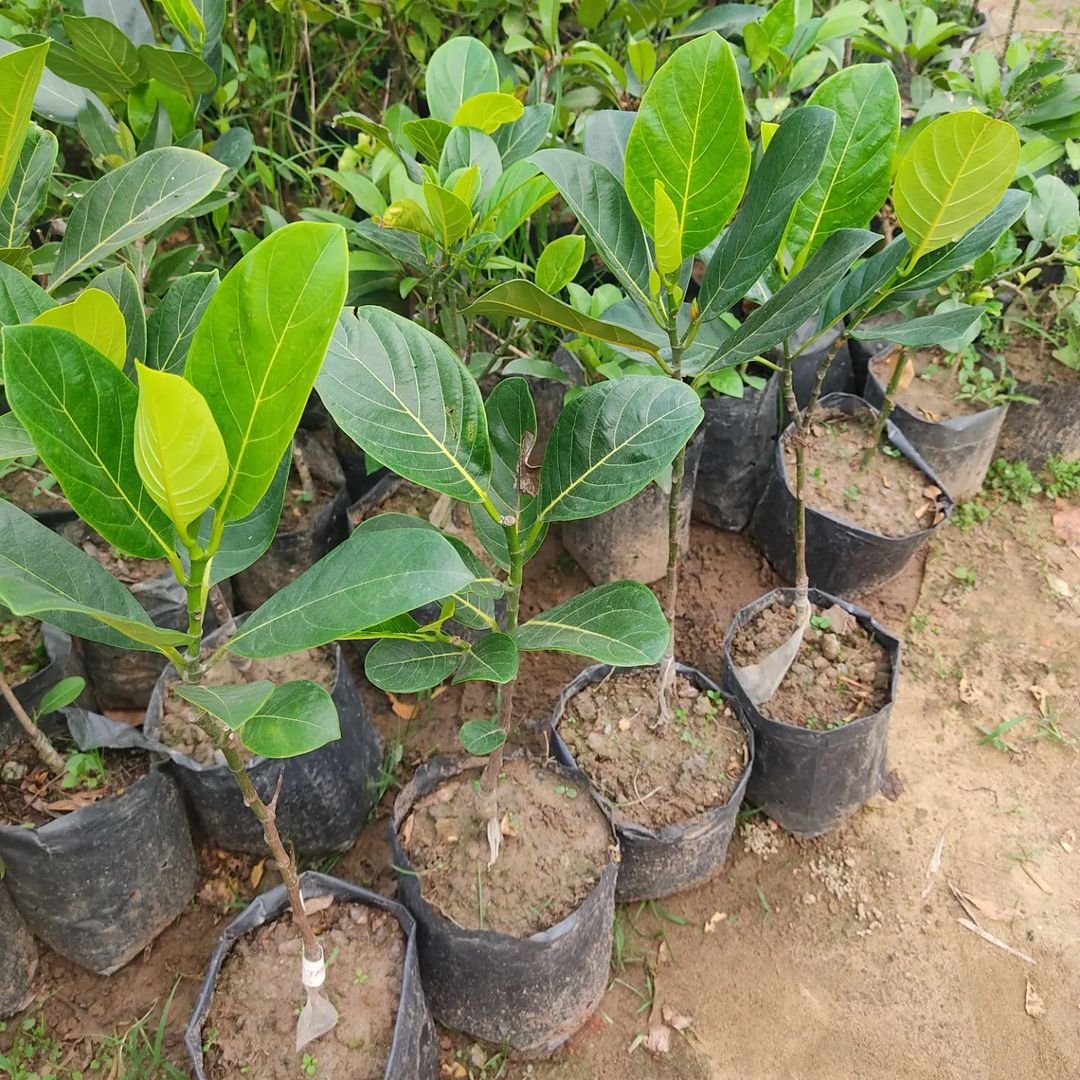Dream of growing stunning red jackfruit? Expert Ashley Scott reveals how! Learn red jackfruit varieties, USA climate tips, container growing, care, harvesting & overcoming challenges. Start your tropical fruit adventure!
Hey there, fellow plant lovers! Ashley Scott here from Gardeners School. With over 10 years of dirt under my fingernails, I’ve grown everything from tiny herbs to towering trees. But few things spark as much curiosity and excitement as the magnificent Red Jackfruit. That vibrant crimson flesh isn’t just eye candy; it’s a delicious, tropical adventure waiting to happen in your garden. And guess what? Growing it in the USA is more possible than you might think! Let’s dive into the juicy world of red jackfruit cultivation.
What is Red Jackfruit?

Forget the giant green jackfruit you might see in Asian markets. Red jackfruit (often sold under names like “Red Morning” or “Red Crunch”) is a stunning variety prized for its intensely sweet, deep orange-to-red flesh. It’s less fibrous than its green cousin, often described as having honey-like notes with a hint of berry. Imagine a tropical sunset captured in a fruit! While native to regions like India and Southeast Asia, adventurous growers worldwide (including right here!) are successfully cultivating these beauties.
Why Bother Growing Red Jackfruit?

- Unbeatable Flavor & Novelty: It’s a true showstopper. The unique color and exceptional sweetness are unlike any other fruit you’ll grow. Guests will be amazed!
- Nutrition Powerhouse: Packed with Vitamin C, potassium, fiber, and antioxidants.
- Ornamental Value: Young red jackfruit trees have gorgeous, glossy, deep green leaves. They make stunning container specimens before they get too big.
- The Challenge & Reward: As a gardener with a decade of experience, I thrive on pushing boundaries. Successfully nurturing a tropical giant like this in a non-tropical climate (with some strategy!) is incredibly satisfying. It’s a conversation piece and a testament to your green thumb!
Popular Red Jackfruit Varieties to Know

- Red Morning: My personal favorite for reliable sweetness and that signature vibrant color. A great starting point.
- Red Crunch: Known for its firm texture and excellent flavor.
- NS1 Red: A Malaysian variety gaining popularity for its productivity and rich taste.
(Tip: When sourcing, ensure the nursery specifically labels it as a red-fleshed variety, as “jackfruit” alone usually means green/yellow flesh).
Can You Really Grow Red Jackfruit in the USA?
Absolutely! But location and strategy are key. Here’s the lowdown:
Microclimates Matter: A warm, sunny south-facing wall can create a significantly warmer pocket, even in borderline zones.
Ideal Zones: Ground planting is realistically only possible year-round in the warmest parts of USA zones 10b and 11 (think South Florida, Hawaii, Southernmost Texas/California coast). Frost is the ultimate enemy.
The Container Solution (My Recommended Approach for Most): This is where the magic happens for gardeners outside the deepest tropics. Growing your red jackfruit tree in a large, movable container allows you to bring it indoors or into a protected greenhouse during chilly months. I’ve seen impressive container-grown trees fruiting in zones as “cool” as 8b with diligent winter care! Learn more about protecting tropical plants in cooler climates on my site.
Getting Started: Your Red Jackfruit Planting Guide

- Sourcing Your Plant: Forget seeds for red jackfruit cultivation. Seeds rarely come true-to-type (your seedling might not produce red fruit!). Always start with a grafted sapling from a reputable nursery specializing in tropical fruits. This guarantees the variety and speeds up fruiting (often in 3-5 years vs. 7+ from seed).
- The Perfect Spot (Sun & Heat!): Jackfruit demands FULL SUN – think 8+ hours daily. The more heat it gets during the growing season, the happier (and potentially sweeter) it will be. Shelter from strong winds is also wise.
- Soil Needs: Well-draining soil is NON-NEGOTIABLE. They hate “wet feet.” If planting in the ground, amend heavy clay soil generously with compost and coarse sand or perlite. For containers, use a high-quality, well-draining potting mix (a cactus/succulent blend with added compost works well). Aim for slightly acidic to neutral pH (6.0-7.0).
- Planting Time: Plant in warm soil, ideally late spring or early summer when frost danger is long gone.
- The Planting Process:
- Ground: Dig a hole 2-3 times wider than the root ball but no deeper. Gently tease out any circling roots. Place the tree, backfill, and water deeply. Mulch heavily (keeping mulch away from the trunk) to retain moisture and suppress weeds.
- Container: Choose the largest pot you can manage (think half-wine barrel size or larger eventually). Ensure excellent drainage holes. Use quality potting mix as above. Repot every 1-2 years into a slightly larger container until it reaches its maximum manageable size.
Caring for Your Red Jackfruit Tree: My Top Tips

- Watering: Consistent moisture is crucial, especially for young trees and during flowering/fruiting. Water deeply when the top 1-2 inches of soil feel dry. Never let it sit in waterlogged soil. Container trees dry out faster and need more frequent watering in summer.
- Feeding (Fertilizing): Jackfruit are hungry! Feed regularly during the active growing season (spring to fall). I use a balanced, slow-release organic fertilizer formulated for fruit trees (look for one with micronutrients) every 2-3 months. Supplement with monthly applications of liquid fish emulsion or seaweed extract for an extra boost. Reduce or stop feeding in winter.
- Pruning: The main goals are shape, size control (especially for containers!), and airflow. Prune in late winter or early spring before major new growth starts.
- Remove dead, diseased, or crossing branches.
- To manage height in containers, you can carefully prune the main leader.
- Thin out dense inner growth to improve light penetration and air circulation.
- Winter Protection (CRITICAL Outside Zones 10b-11):
- Containers: Move indoors before the first frost threat. Place in your sunniest window (a south-facing one is best) or under strong grow lights. A heated greenhouse is ideal. Reduce watering but don’t let it completely dry out. Stop fertilizing.
- In-Ground: If you’re in a borderline zone and have a small tree, you might protect it with heavy mulch over the roots, burlap wraps around the trunk, and temporary frost cloth covering during freezes. This is risky, and success isn’t guaranteed in severe cold.
Potential Pests & Diseases (Stay Vigilant!)

Thankfully, red jackfruit trees are relatively robust, but watch for:
- Fruit Flies & Pests: Use fruit fly traps and bagging young fruit (once pollinated) is highly effective. Neem oil sprays can help control scale, aphids, or mealybugs. Always inspect new plants carefully before bringing them near your collection!
- Root Rot: Caused by chronically wet soil. Prevention (good drainage!) is the only cure.
- Anthracnose/Fungal Spots: Improve air circulation, avoid overhead watering, and remove affected leaves/fruit. Copper fungicide sprays can be used preventatively if issues arise.
- Birds & Squirrels: They will find ripe fruit! Bagging or netting is often necessary. Learn about effective organic pest control methods I use.
The Big Reward: Harvesting Your Red Jackfruit!
Patience is Key: It can take 3-8 years for a grafted tree to fruit.
Ripeness Clues: This is an art! Look for:
A change in skin color from green to yellowish-green (subtle on red varieties).
A strong, sweet, fragrant aroma near the stem.
The spines on the skin soften and spread slightly.
A hollow sound when tapped gently.
The Harvest: Use sharp, clean loppers or a knife. Leave a small stem attached to the fruit. Be careful – the sticky latex sap is incredibly glue-like! Coat your knife and hands with vegetable oil to minimize sticking. Wear old clothes!
Storage: Whole, ripe jackfruit can be stored at room temp for a few days or refrigerated for up to a week. Once cut, store the cleaned arils (flesh pods) in an airtight container in the fridge for 3-5 days, or freeze them.
Enjoying Your Bounty!
That gorgeous red flesh is delicious fresh! Scoop out the pods (arils) and enjoy them raw. Remove the seeds first – they are edible when boiled or roasted (taste like chestnuts!). You can also use it in smoothies, ice cream, salads, curries (use young green jackfruit for a meat substitute texture), or desserts. It’s incredibly versatile!
The Real Talk: Challenges & Mindset
- Space: Jackfruit trees are massive in the tropics. Even in containers, they need significant space and large pots.
- Patience: Fruiting takes years.
- Cold Sensitivity: This is the biggest hurdle for USA growers outside the warmest zones. Container growing and diligent winter care are essential.
- Weight: Large fruit on container trees may need support to prevent branches from breaking.
Conclusion: Is Red Jackfruit Cultivation For You?
If you crave adventure, have the space (or commitment to container growing), live in a warm climate (or have a sunny winter spot), and possess patience, then YES! Growing a red jackfruit tree is an incredibly rewarding experience. That first harvest of stunning, sweet, crimson fruit you nurtured yourself is pure gardening magic. It connects you to the tropics right in your own backyard (or sunroom!).
Ready to embrace the challenge? Start researching reputable nurseries for grafted red jackfruit varieties. Trust me, that vibrant red harvest is worth the effort. Happy growing!
Pingback: A Comprehensive Guide to Growing Red Jackfruit ...
Pingback: Grow Your Own Wisteria from Seeds: A Step-by-Step Guide -
Pingback: Gooseberry Gardening: A Complete Guide to Growth and Care
Pingback: Trees That Start with N : Choosing the Best Guide
Pingback: Growing a Fruitful Mango Tree : A Global Perspective - Gardener's School
Pingback: 15 British Garden Birds You Can Find in Your Garden - Gardener's School
Pingback: Nature’s Beauty : Trees That Start with ‘Q’
Pingback: Lychee Legends : Unveiling the Secrets of Successful Growth